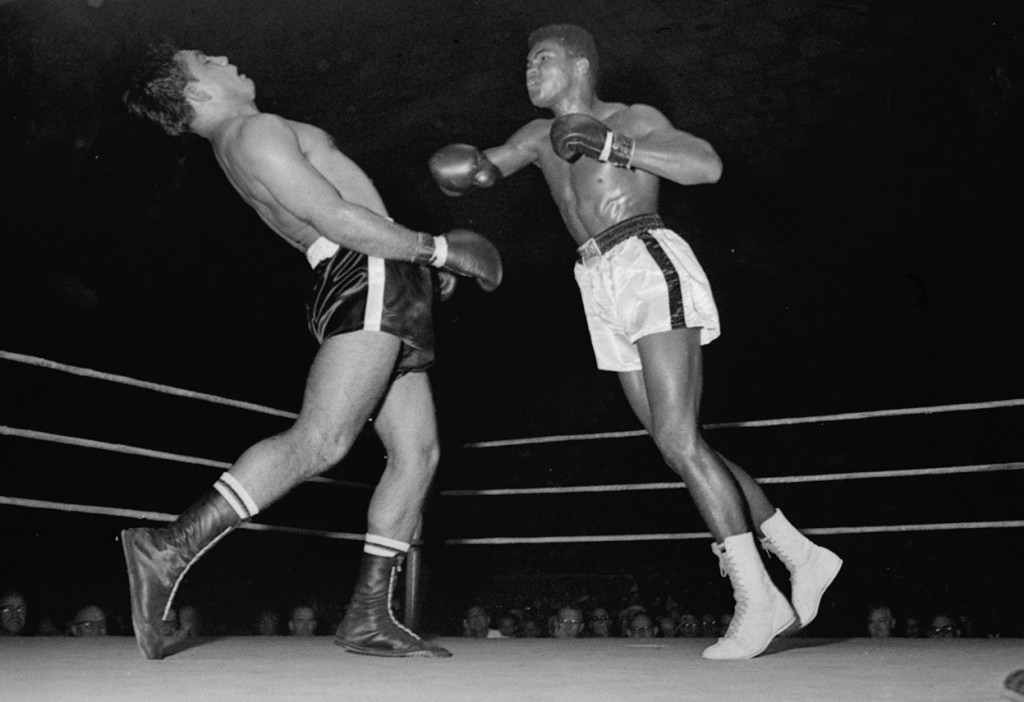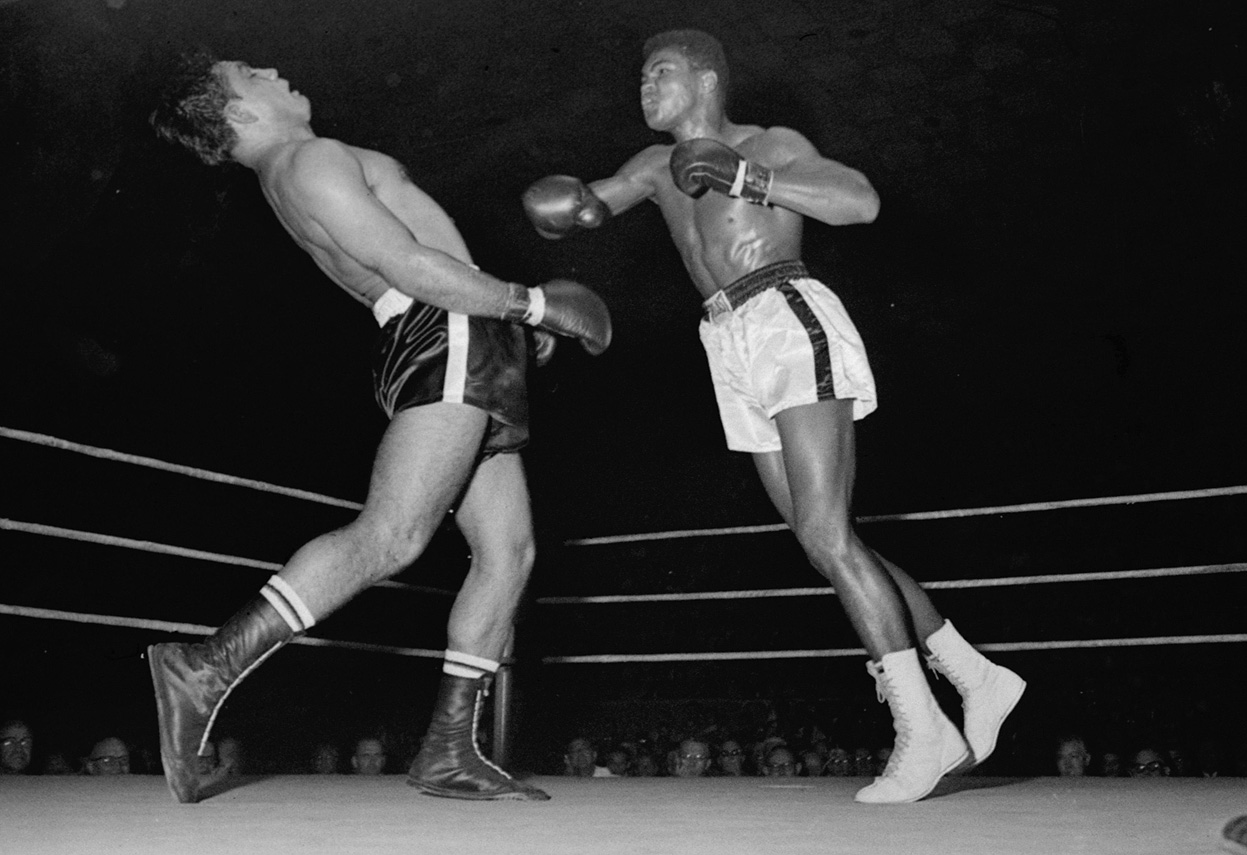Criss-crossing, back-to-front, having a mind of their own and going in every direction but where I wanted them to go. That’s how I would describe my feet when I first started boxing.
How do you rate your footwork? Are you nimble, quick to attack, and hard as hell to hit?
Having slick feet when training is one thing, but I’m willing to bet that all that fancy footwork goes out the window when you’re trying to avoid a barrage of punches when sparring or fighting. When the pressures on, your feet become dead weight. They’re cumbersome, slow off the mark, and just outright unresponsive at times.
Even if you move around the ring with the quickness, gracefulness, and agility of a gazelle, there’s always room for improvement.
These boxing footwork training exercises will have you, in the words of the Great Ali, “floating like a butterfly”.

Why Bother With Boxing Footwork Training?
Although boxing focuses on the hands, footwork is such a crucial and often overlooked component of the sport.
When you’re fighting, you need to be able to move in and out of striking range quickly.
If you’re quick on your feet, you have the ability to set the pace of the fight. You can slow it down and pick your shots, rush your opponent into the corner, or be the fast and evasive “ghost” that is always just out of reach.
Your feet and legs are also where a lot of the power comes from – upper body strength will only get you so far.
You need to be able to rotate on the balls of your feet if you want knockout hooks. And being able to push off the ground and transfer the power from your legs makes for lethal crosses and uppercuts.
Exercises that are focused on building the fast, twitch muscles in your legs will ultimately lead to you becoming a more responsive, agile, and balanced fighter.
So, without further ado, here are nine boxing footwork training exercises that improve your technique, power, speed, and agility.
Obstacle Courses
When it comes to moving around in your guard, practice makes perfect.
Once you’ve got basic boxing footwork mastered and you’re confident that you can move in all directions while keeping a tight guard, it’s time to start challenging yourself.
Footwork obstacle courses can be made from anything, however, I find that small cones that are intended for sports training work well.
There are a gazillion options for a course. They could be as simple as zig-zagging through a few cones in a straight line, to moving in, out, side-to-side, and pivoting through a cone maze of your imagining.
Bind Your Ankles
Having a wide stance is inefficient in boxing as it hinders your ability to move quickly.
Tying a shoulder’s width length of rope between your legs while shadowboxing is a simple technique that rectifies an overly wide stance.
Simple? Yes. Effective? You bet!
If you’re like me, and you naturally have a wide stance, you’ll find this exercise difficult in the beginning as your lead leg constantly tugs the lagging leg each time you move. However, give it a few weeks, and there will be no tension in the rope, and you’ll find you move with ease quickly, and with your feet the correct distance apart.
Mirror Your Partner
Mirroring your partner’s movements is a simple but helpful technique for improving footwork and reaction time.
Face your partner in your stance, keeping roughly a metres distance between you, and then decide who is going to be the leader (don’t worry, you get to switch).
The leader then moves in any direction, and the partner follows while always maintaining the same distance apart.
After the end of the round, switch roles.
Jump Rope
Jumping rope, or skipping, is an extremely effective exercise for building the fast twitch muscles in your calves that are essential for boxing.
Why do you think you see so many professional boxers incorporating skipping into their workouts?
Unlike other leg exercises like squats, lunges, and calf raises, skipping simulates the fast, continuous bouncing movement in boxing.
Jumping rope means you’ll do hundreds or even thousands of explosive repetitions using the same muscles that are used when darting in and out when fighting. By engaging in this kind of sport specific muscle conditioning, you’ll find that your endurance in the ring increases.
If more stamina and muscle wasn’t a good enough reason to jump rope more often, perhaps the prospect of better balance, coordination, agility, speed, and breathing efficiency may convince you otherwise.
If you don’t know how to skip, the easiest method is to perform a tiny jump with both feet or jog on the spot with your knees up. If you keep snagging the rope, try performing the movements without the rope, and then use the rope again once you’ve got the hang of it.
Shadowboxing
Shadowboxing is a great footwork exercise as you can practice moving around in your stance without getting punched.
Be conscious of your feet movement while shadowboxing and move as you would do when sparring or fighting. Throw combinations while moving and use your quick feet to pursue an imaginary opponent, or try pivoting out of a tight spot and then countering, or moving in and out of range with each combination you throw.
Adopt proper footwork when shadowboxing, and it will reflect when you’re pitted against an actual opponent.
If you have a large mirror available, shadowbox in front of it as you’ll be able to easily see what you’re feet are doing without looking down at them.
Ladders
Ladder drills are an excellent footwork exercise for improving your speed and agility.
You’ll often see athletes that rely on quick feet, such as footballers, basketballers, and sprinters, practicing ladder exercises.
The drills consist of a combination of quick steps moving backwards, forwards, and side-to-side on the ladder that are designed to get the feet responding as fast as possible.
They improve the coordination and quickness of your feet which will transfer to slick footwork in the ring.
Sprints
You may not associate sprinting with boxing footwork training as the objective of boxing is to stand and fight and not flee.
However, sprinting is a super effective method of increasing foot speed as the powerful thrusts off the ground when sprinting builds leg muscles quickly.
The explosive bursts are not only good for your legs, as sprinting is one of the best exercises for your cardiovascular system.
Try setting up cones 25m apart. Set a timer to two minutes, sprint 25m, and then jog or walk back. Repeat until the time is up and record how many laps you managed.
Doing this exercise two or three times a week yields surprising results.
If you want evidence of your progress, chart the data on a line graph. I can guarantee that within a few short weeks, your line will be steadily trending upwards, and you’ll notice huge improvements in your fitness.
Plyometric Exercises
Plyometric, or plyos, is a type of training that focuses on exerting maximum force in short bursts which is known to improve the reaction speed of the fast twitch muscle fibers.
These spurts of explosive energy are similar to that required in boxing and other martial arts as well as sprinting and other track and field sports.
Plyometric exercises work wonders for increasing muscle functionality, leg strength, and flexibility. Quite simply, plyometric training could be the difference between an average boxer and a great boxer.
Got you interested yet?
Good, here’s a list of plyometric exercises that build explosive muscle in the legs. Once you’ve got the technique down, really leap off the ground – the higher and more explosive the jump, the more muscles used and developed.
Burpees – Everyone’s favourite exercise (if you’ve ever done burpees before, you’ll recognise the sarcasm). Starting from standing, drop down to a push-up position, then go back to standing and perform a small jump.
Tuck Jumps – Starting from standing, do a small squat to load power in the legs, then jump up and tuck your knees into your chest. Extend your legs as you land.
Squat Jumps – Horrible leg punishment. Squat down as far as you can, then jump up as high as you can.
Lateral Jumps – Jump from side to side. This is a good one for working on your balance.
Power Skipping – Jogging while skipping but doing it with your knees up as high as you can.
Box Jumps
Box jumps are a plyometric exercise, but as the name suggests, the jumps are performed on a box.
The box makes the manoeuvre more difficult as you have to jump to clear the required height.
A standard box is 18” from the ground to top, however, they come in a range of heights from 12” to 36”.
Don’t start off trying to jump the highest box possible. Pick a box that is challenging to jump onto but which you can safely land on top with both feet.
As you build explosive muscle, increase the intensity of the workout by increasing the box size.
Conclusion
Everyone looks to the upper body when looking to improve their fight game.
“If only my hands were faster and my biceps bigger, then I would be a better boxer.”
However, a stable base founded on proper boxing footwork technique, and with feet that have been trained to be highly responsive and agile, will improve your speed and power just as much as any tweaks to your upper body.
If you want to become a great boxer, I suggest you start working on your game from the ground up.
